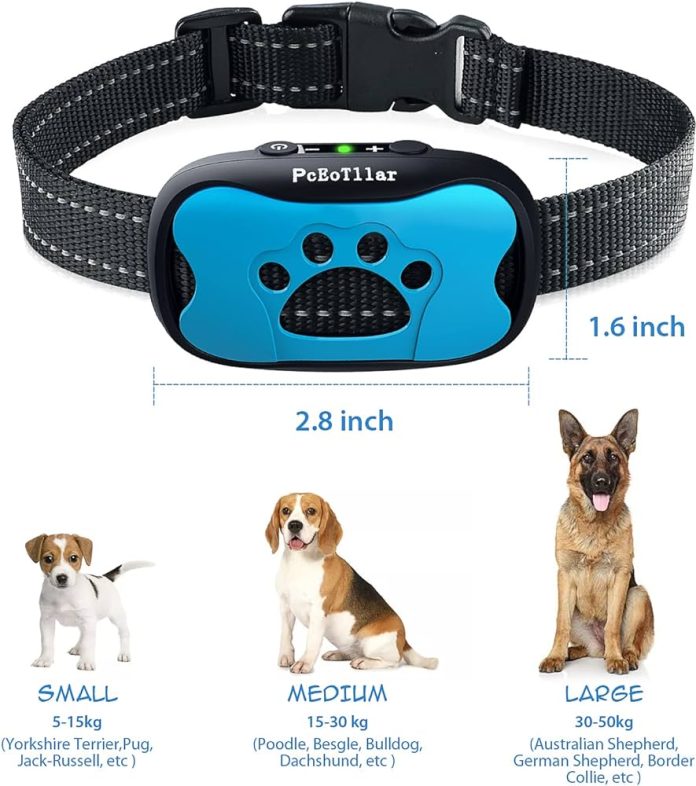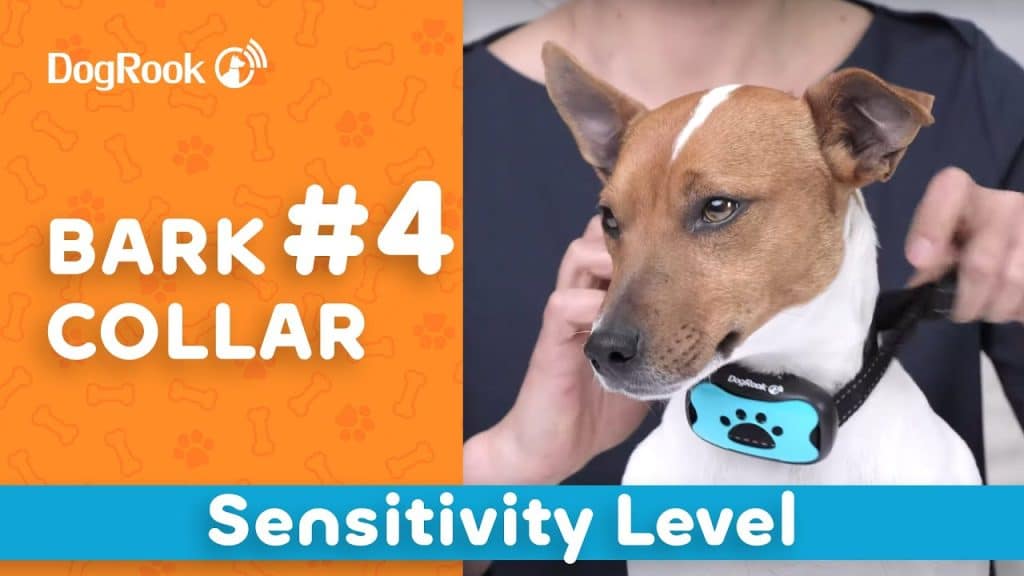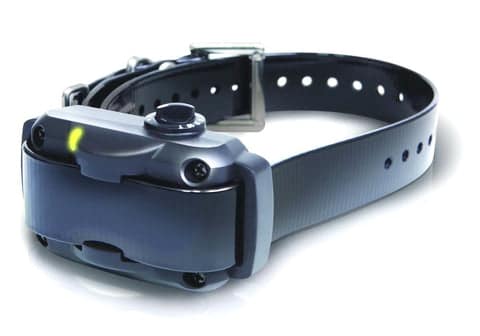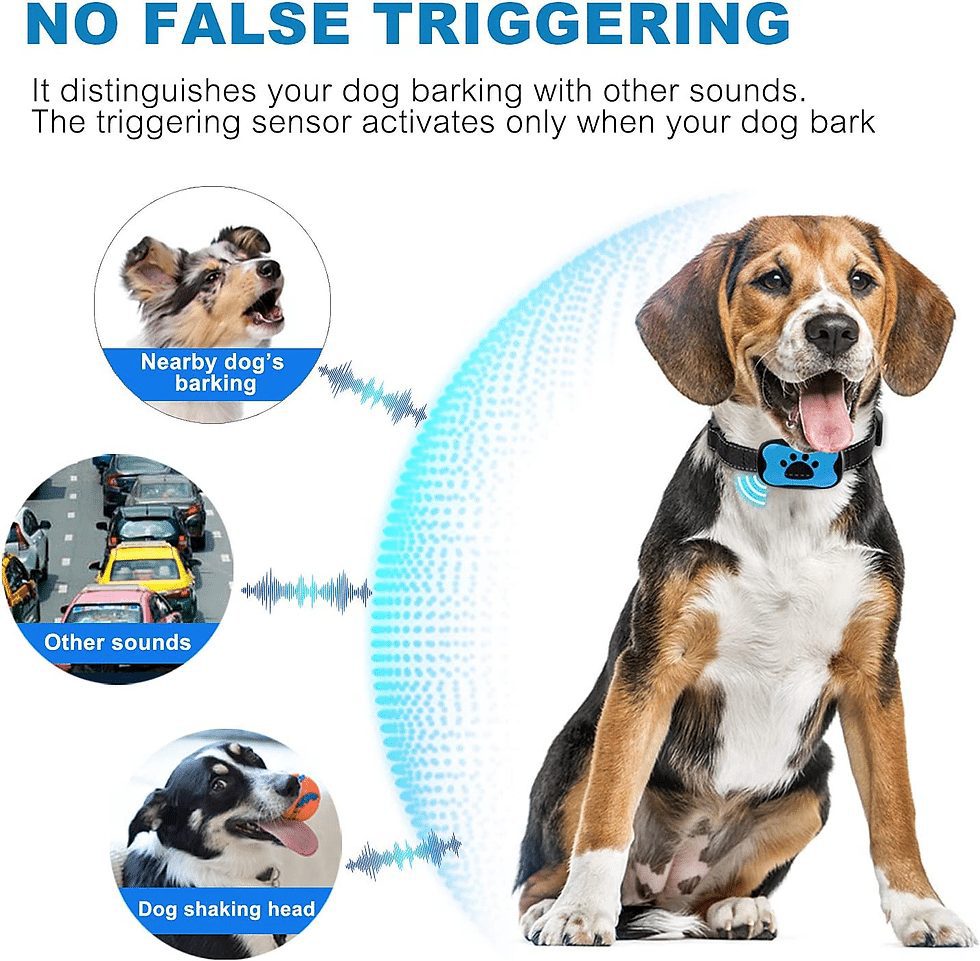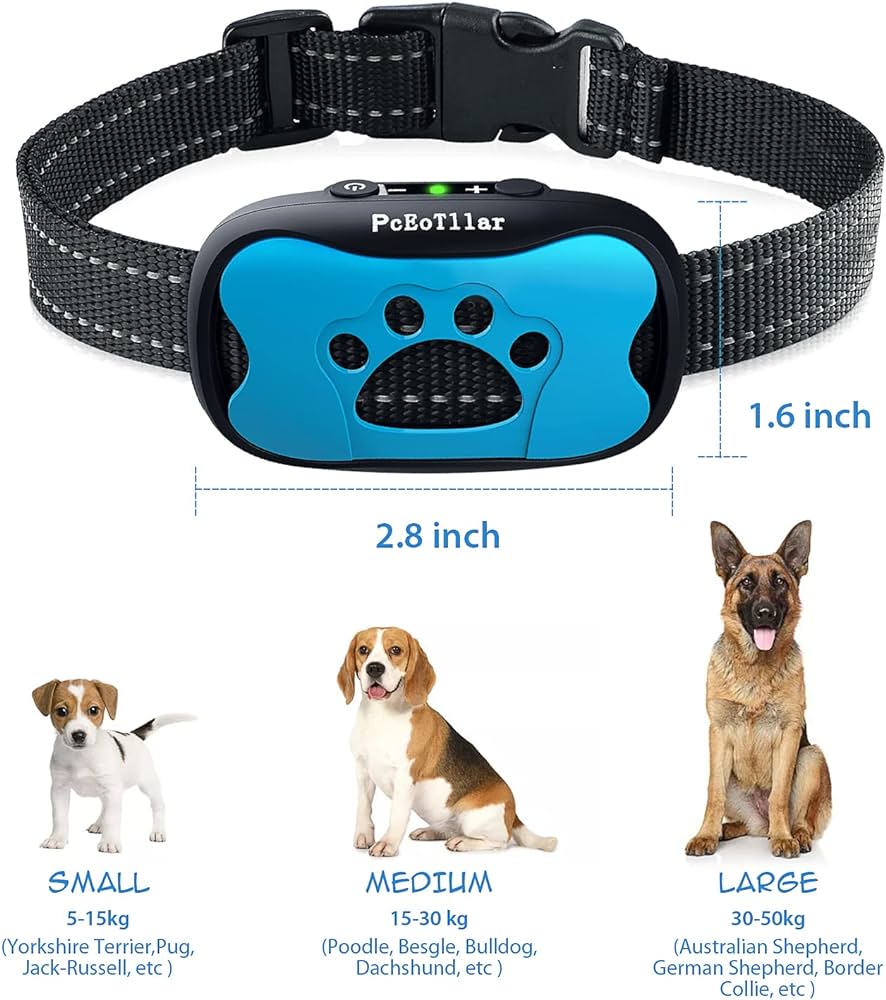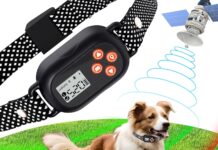We understand the frustration and uncertainty of figuring out the suitable bark collar sensitivity for your beloved furry friend. With so many options available, it can be overwhelming to determine which one will effectively and safely discourage excessive barking without causing any harm to your dog.
That’s why we’re here to provide you with a comprehensive guide to help you navigate the various factors to consider when selecting the perfect bark collar sensitivity for your dog. Rest assured, we’ve got your back and are committed to assisting you in finding the ideal solution for your pup’s unique needs.
This image is the property of petstek.com.
Factors to consider when choosing bark collar sensitivity
When selecting a bark collar for our furry friends, several important factors must be considered. By taking into account the size and breed of the dog, their barking behavior, training goals, collar features, sensitivity levels, adjustable versus fixed sensitivity, sound versus vibration sensors, safety features, consulting with a professional, and even some trial and error, we can make a well-informed decision that ensures both the effectiveness and safety of the bark collar.
Size and breed of the dog
The size and breed of the dog play a crucial role in determining the appropriate bark collar sensitivity. Small dogs, such as Chihuahuas or Shih Tzus, may require a collar with lower sensitivity levels, as they tend to have more delicate temperaments. On the other hand, larger breeds like Great Danes or German Shepherds may need a collar with higher sensitivity levels to address their louder and more robust barking adequately.
Different breeds also have different sensitivities, so it’s essential to consider your dog’s breed traits when determining the appropriate bark collar sensitivity. Some breeds, like Beagles or Terriers, are known to be more vocal, while others, like Basenjis or Greyhounds, tend to bark less frequently. By understanding your dog’s breed tendencies, you can better align their needs with the collar sensitivity.
Barking behavior
Understanding your dog’s barking behavior is another critical aspect of choosing the suitable bark collar sensitivity. Consider the frequency and intensity of your dog’s barking. Some dogs may have occasional, short bursts of barking, while others may bark incessantly. Additionally, the intensity of their barking can range from quiet whining to loud, persistent barks.
Identifying the triggers for your dog’s barking is equally essential. Do they bark mainly when they are alone, when they see other animals, or when they hear unfamiliar sounds? You can tailor the bark collar sensitivity to address those specific situations by pinpointing the triggers.
Training goals
Before selecting a bark collar sensitivity, defining your training goals is crucial. Are you primarily focused on curbing excessive barking, or are you aiming to teach appropriate behavior? Balancing correction with positive reinforcement is essential to ensure a healthy training approach.
A collar with higher sensitivity levels can provide swift correction for excessive barking, discouraging the habit. On the other hand, if your goal is to teach appropriate barking behavior, a collar with adjustable sensitivity levels can help your dog learn when barking is acceptable and when it is not.
This image is the property of i.ytimg.com.
Collar features
Different bark collars offer various features that can impact the sensitivity level. Some collars utilize static correction, which delivers mild electric stimulation when the dog barks excessively. Others may incorporate spray, ultrasonic, or citronella correction to deter barking. It’s essential to weigh the pros and cons of each type of correction and determine which is best suited for your dog’s needs.
Additional collar features like remote control options can also enhance the training experience. Adjusting sensitivity levels or providing commands remotely can provide greater control over your dog’s behavior.
Sensitivity levels
Bark collars offer multiple sensitivity levels to accommodate different dogs and their needs. These levels can range from low to medium to high sensitivity.
Low sensitivity levels are suitable for dogs with relatively mild barking habits or more sensitive to correction. Medium sensitivity levels cover a broader range of barking behaviors, balancing correction, and adaptability. High sensitivity levels are helpful for dogs with persistent and intense barking tendencies.
Some bark collars also allow for gradual sensitivity adjustment, allowing you to fine-tune the correction according to your dog’s response.
This image is the property of cdn.shopify.com.
Adjustable vs. fixed sensitivity
When considering bark collar sensitivity, deciding between adjustable and fixed levels is essential. Adjustable sensitivity collars offer the flexibility to customize the correction to your dog’s needs. This adaptability is beneficial as your dog’s behavior and responsiveness may change.
Fixed sensitivity collars, on the other hand, come pre-set with a specific level. While they may require less adjustment initially, they may not offer the same level of customization as adjustable collars.
Sound vs. vibration sensors
Bark collars commonly employ either sound or vibration sensors to detect barking and trigger correction. Sound sensors pick up on the sound of the dog’s barking, while vibration sensors detect the physical vibrations produced by bark-related muscle movements.
Understanding how these sensors work can help determine the most suitable option for your dog. Some dogs may respond better to sound sensors, while vibration sensors may more effectively correct others. When selecting the sensor type, it’s essential to consider your dog’s temperament and sensitivities.
This image is the property of static.wixstatic.com.
Safety features
Ensuring the safety of our dogs is paramount when choosing a bark collar sensitivity. Look for collars that offer safety features, such as an auto-shutoff feature, which prevents prolonged correction. A safety time-out function allows the collar to stop correcting after a specific duration, preventing potential harm.
Collars with progressive correction increase the intensity gradually, providing a more humane approach to behavior correction. Built-in safety mechanisms like automatic shut-off ensure no harm to your dog during training sessions.
Consulting with a professional
If you’re unsure which bark collar sensitivity is appropriate for your dog, it’s always a good idea to consult a professional dog trainer or veterinarian. These experts can evaluate your dog’s needs, behavior, and temperament to provide personalized recommendations.
A professional’s guidance can help navigate the numerous options available and ensure you make an informed decision that aligns with your dog’s training goals and overall well-being.
This image is the property of Amazon.com.
Trial and error
Sometimes, despite careful consideration, choosing the suitable bark collar sensitivity may involve a degree of trial and error. Every dog is unique, and what works for one may not work for another. By observing your dog’s reaction to different sensitivity levels, you can make necessary adjustments to find the optimal setting.
It’s important to note that any sensitivity adjustments should be gradual. Abrupt changes can lead to confusion or an adverse response. Monitor your dog’s behavior and reactions closely, and make minor adjustments over time as needed.
By remaining patient and observant, you can find the ideal bark collar sensitivity that effectively curbs excessive barking and fosters appropriate behavior in your furry companion.
In conclusion, choosing the suitable bark collar sensitivity involves considering factors such as the size and breed of the dog, their barking behavior, training goals, collar features, sensitivity levels, adjustable versus fixed sensitivity, sound versus vibration sensors, safety features, consulting with professionals, and utilizing trial and error.
By considering these factors, we can prioritize the effectiveness and safety of the bark collar, ensuring a successful training journey for our beloved dogs.

